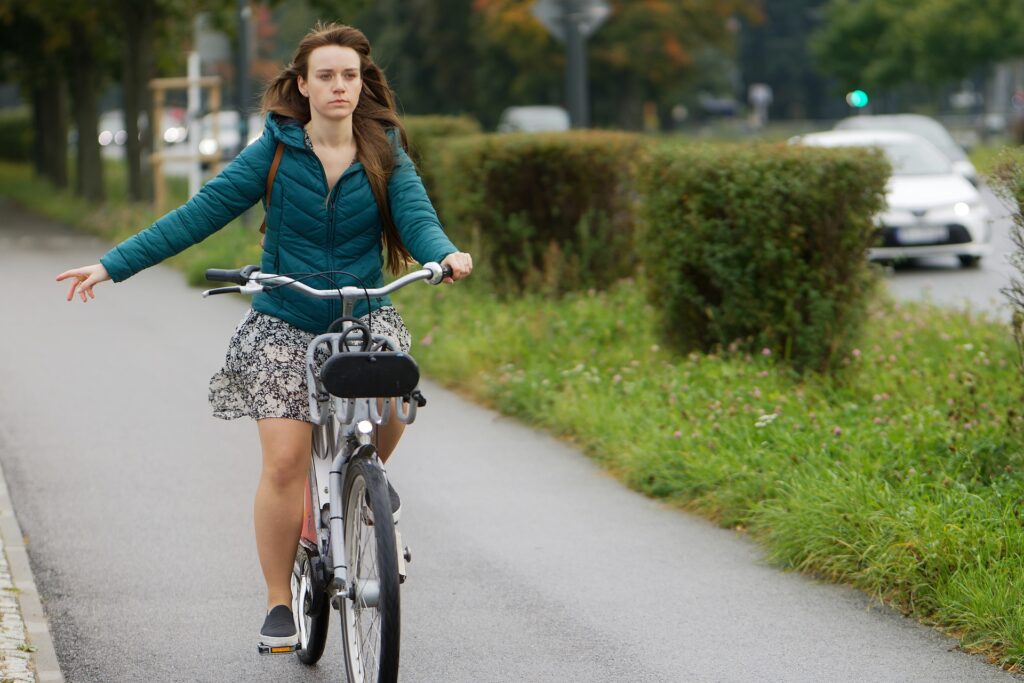
How to Drive Nice so Everyone Arrives Safely
There are a handful of people who give an entire group a bad name. There are those cyclists who act entitled, and make it so a lot of drivers don’t like cyclists as a whole. But at the same time, there are motorists who act smug, and make it so a lot of cyclists don’t like motorists as a whole.
Understanding the laws and rights as a motorist and a cyclist can help everyone to ride together in harmony, and allow everyone to arrive safely and without incident. Let’s check in with the Car Crash Captain and see what the laws are for those riding a bicycle.
What is Considered to be a Bicycle?
With all of the latest advancements in personalized transportation devices, it can be difficult to really understand what constitutes a bicycle.
Essentially, a bicycle is a vehicle that is operated by human power; the exception being electric bicycles and mopeds (they’re kind of hybrids). What is not considered to be a bicycle would be devices like hoverboards and one-wheels.
It’s important to know that bicycles are considered to be vehicles. And thus, they have to follow the same rules as other vehicles.
What Laws and Rules must Cyclists Follow?
Cyclists have to follow the same rules as motor vehicles, in fact they have all the same rights and duties as vehicle operators. That includes stopping at all stop signs and red lights, yielding the right-of-way, signaling their turns, and riding on the street (not the sidewalk).
Bicycles have to go in the same direction as traffic (you can’t whip down a one-way street because it’s easier – unless you get off your bike and walk while pushing it on the sidewalk). Cyclists need to ride near the curb so motor vehicles can overtake them safely, but in most cases, they are allowed to take the full lane when necessary.
Laws state that you have to ride with at least one hand on the handlebars (two is better, unless signaling), only one rider per saddle (tandem bikes, obviously, have two seats or saddles), ride single file (you can ride two abreast if you’re not impeding traffic), have the proper reflectors or lights, and working brakes.
In most cases, riding near the curb, signaling turns, and following the rules of the road are going to make you a pleasant bike rider that motor vehicle operators won’t get mad at.

What Laws and Rules must Motorists Follow?
Motorists, obviously, must follow the rules of the road. Most of us know these rules, and we were trained in our driver’s education classes how to operate on roadways. Often, however, we’re not trained on how to deal with bicyclists.
When sharing the road, know that cyclists have just as much of a right to use the roadway as those driving motor vehicles.
However, it’s important to know that in a car vs. bicycle collision, things almost never fare well for the cyclist. Even if they’re in the wrong, your vehicle will do far more damage to them than they will to you. So be aware that not all cyclists know the rules of the road, they may not yield, and they may think they have special rights and privileges. It’s not worth taking a human life just to be right.
Yield, when necessary, give grace if they don’t yield, and understand that most cyclists don’t want to be on a road with speeding vehicles, but often there aren’t other choices.
When we all act as the bigger person, then things will progress much more smoothly in the world.
Visit with Herbert Law Group if You’ve been Injured in a Car Wreck
Have you been injured in a wreck? Whether that wreck was caused by a cyclist, a motorist, a trucker, or someone else, the road to recovery can be long.
That’s why Herbert Law Group is here. We’ll take the stress of dealing with insurance companies and all the legal mumbo jumbo off your plate. You focus on healing; we’ll focus on helping you receive compensation that will truly help compensate you after your wreck.
Let’s talk about what happened. Call our offices at 214-414-3808, or fill out the contact form on our site and we’ll reach out to you.